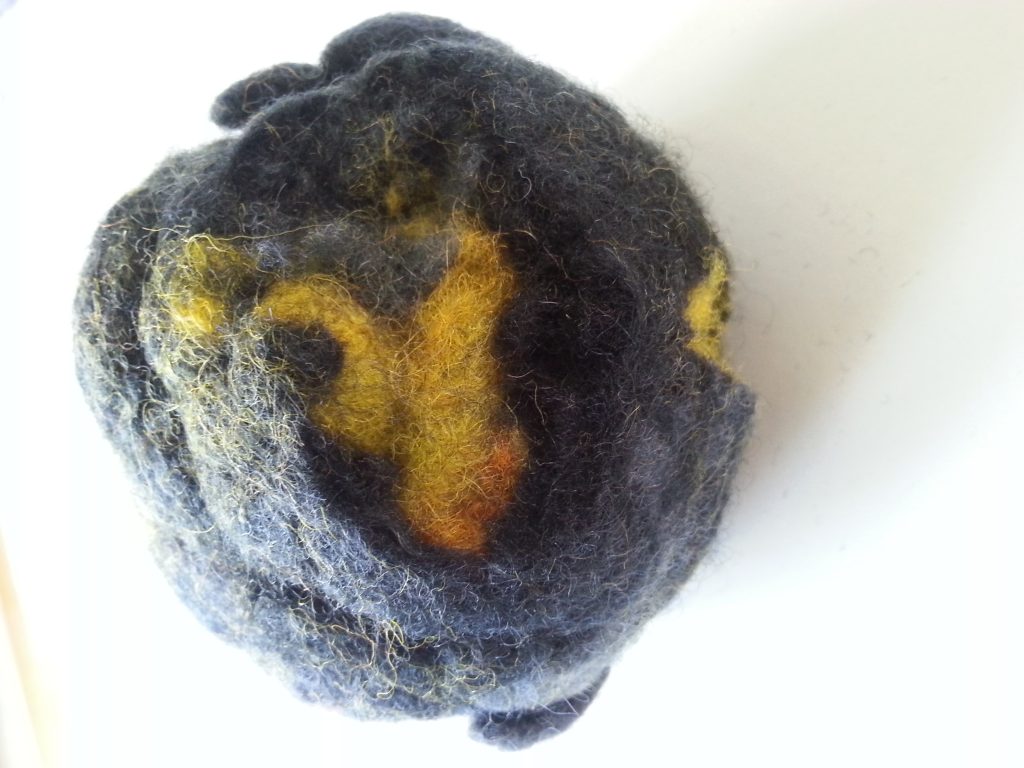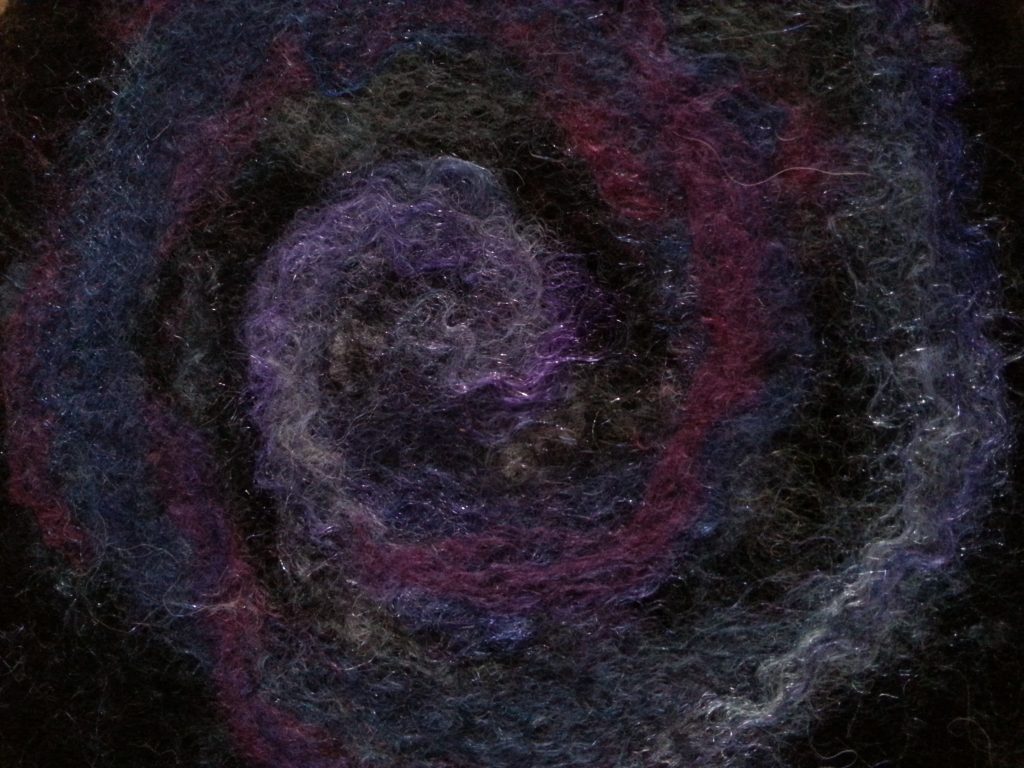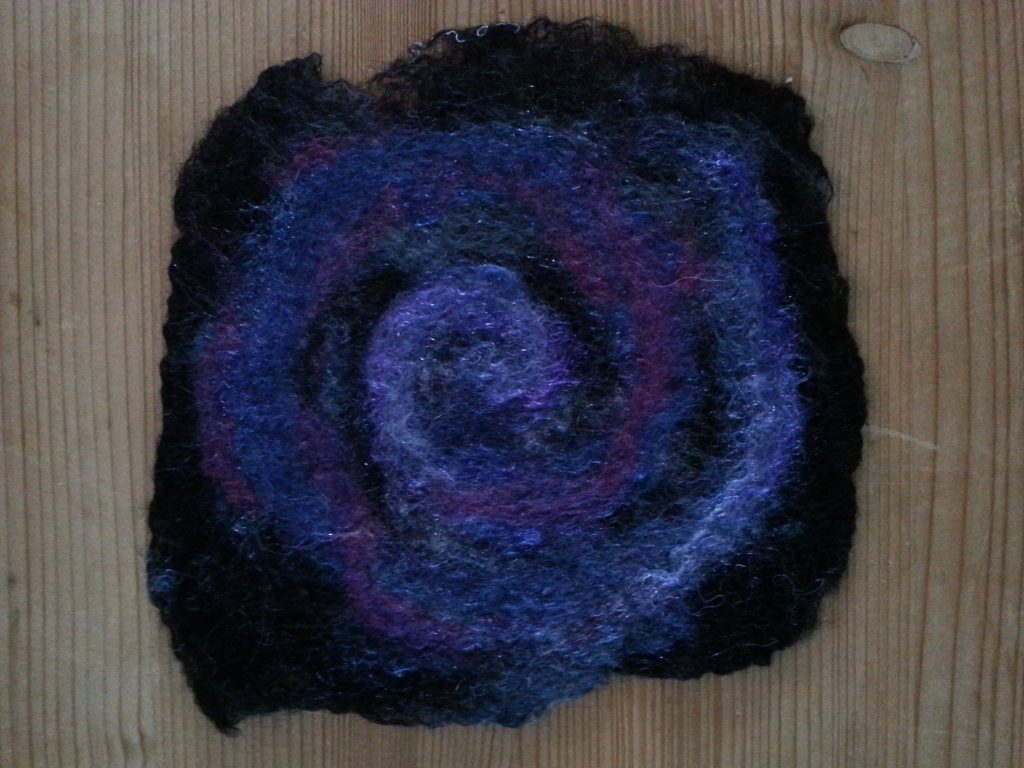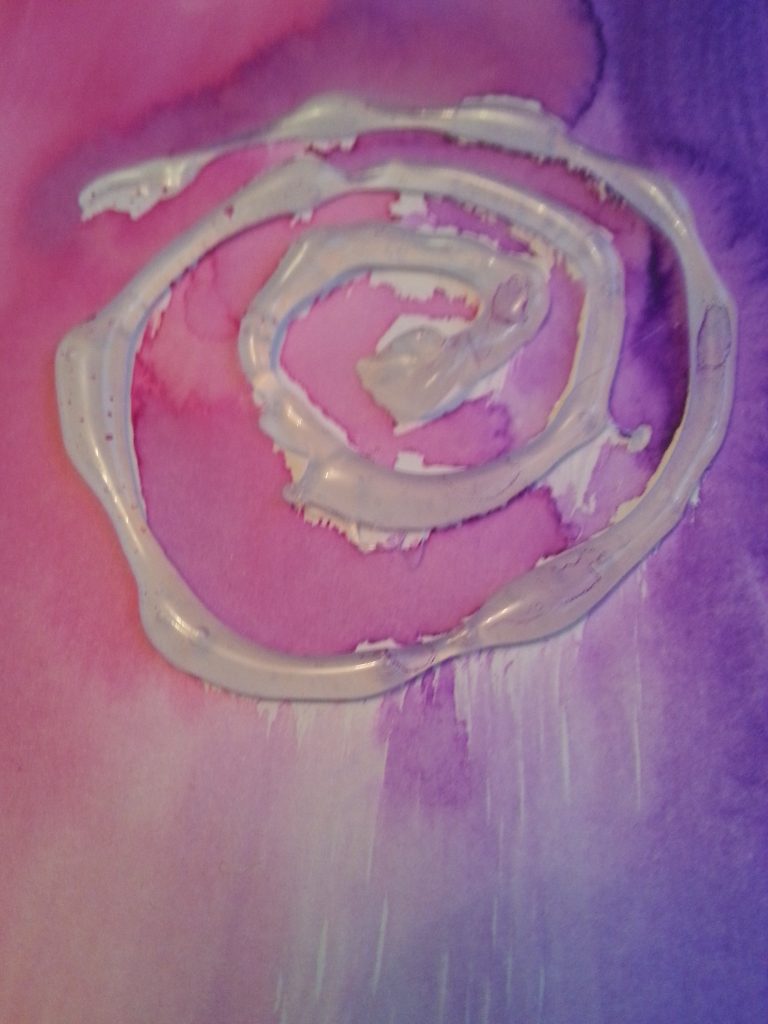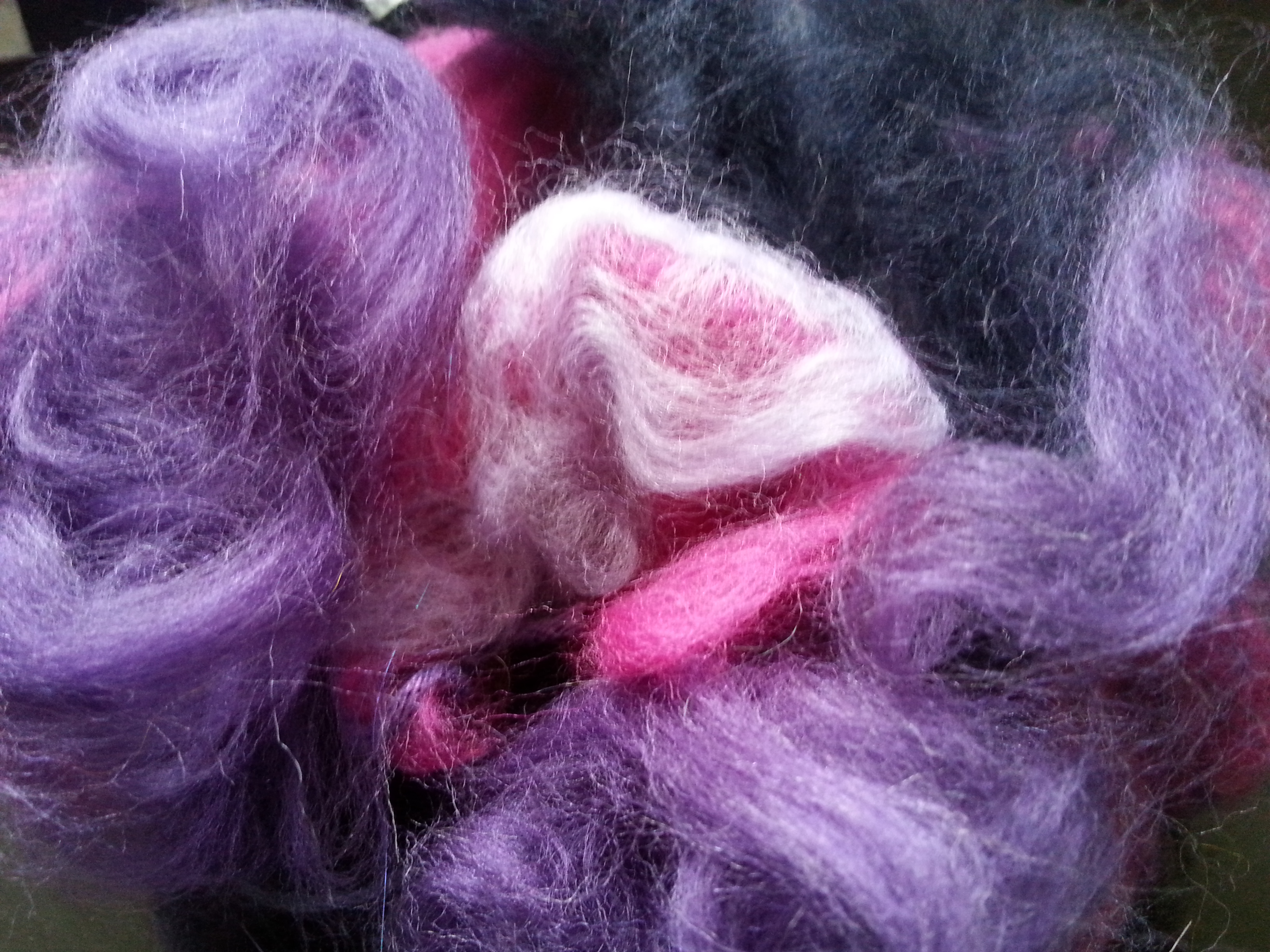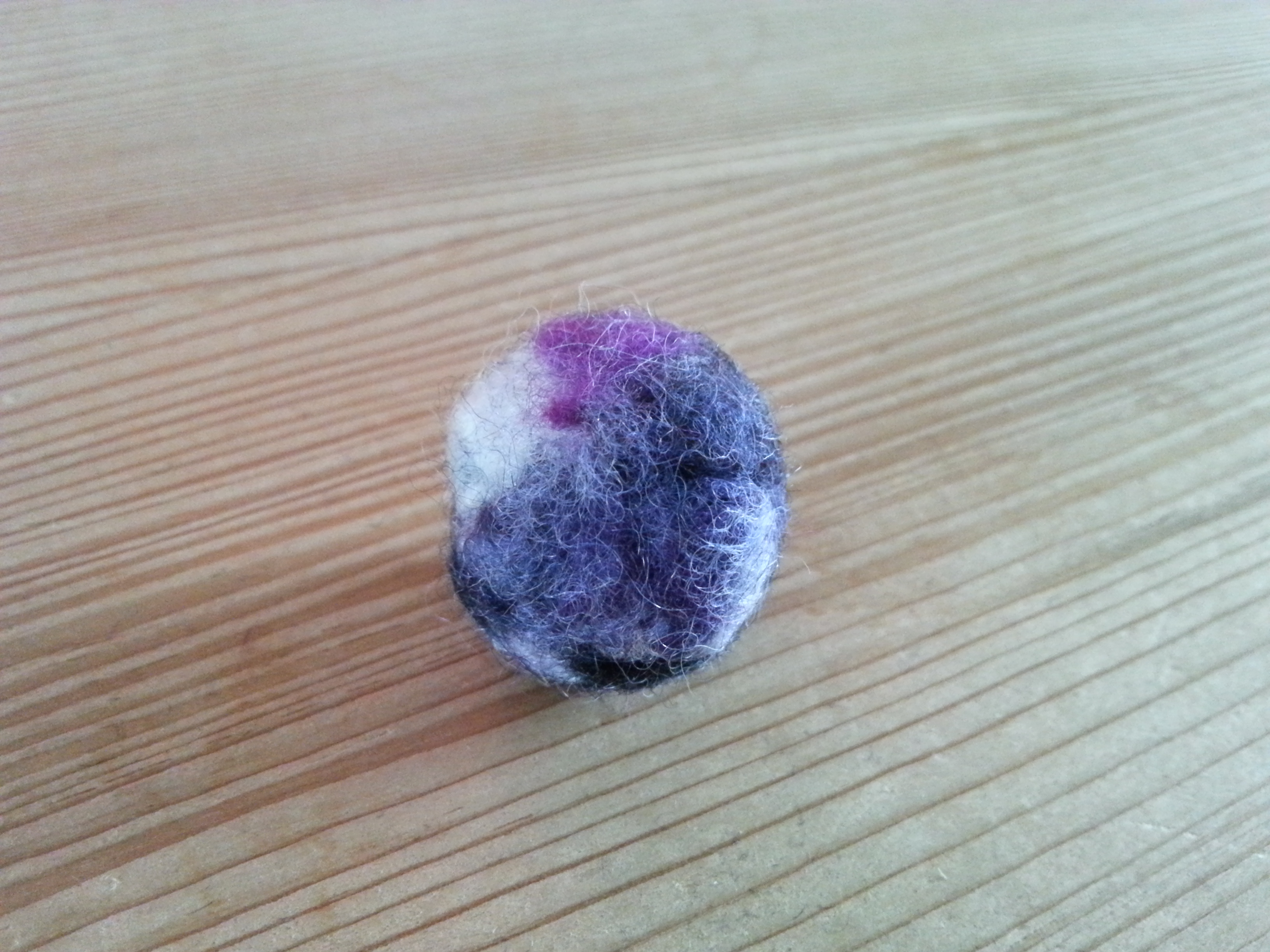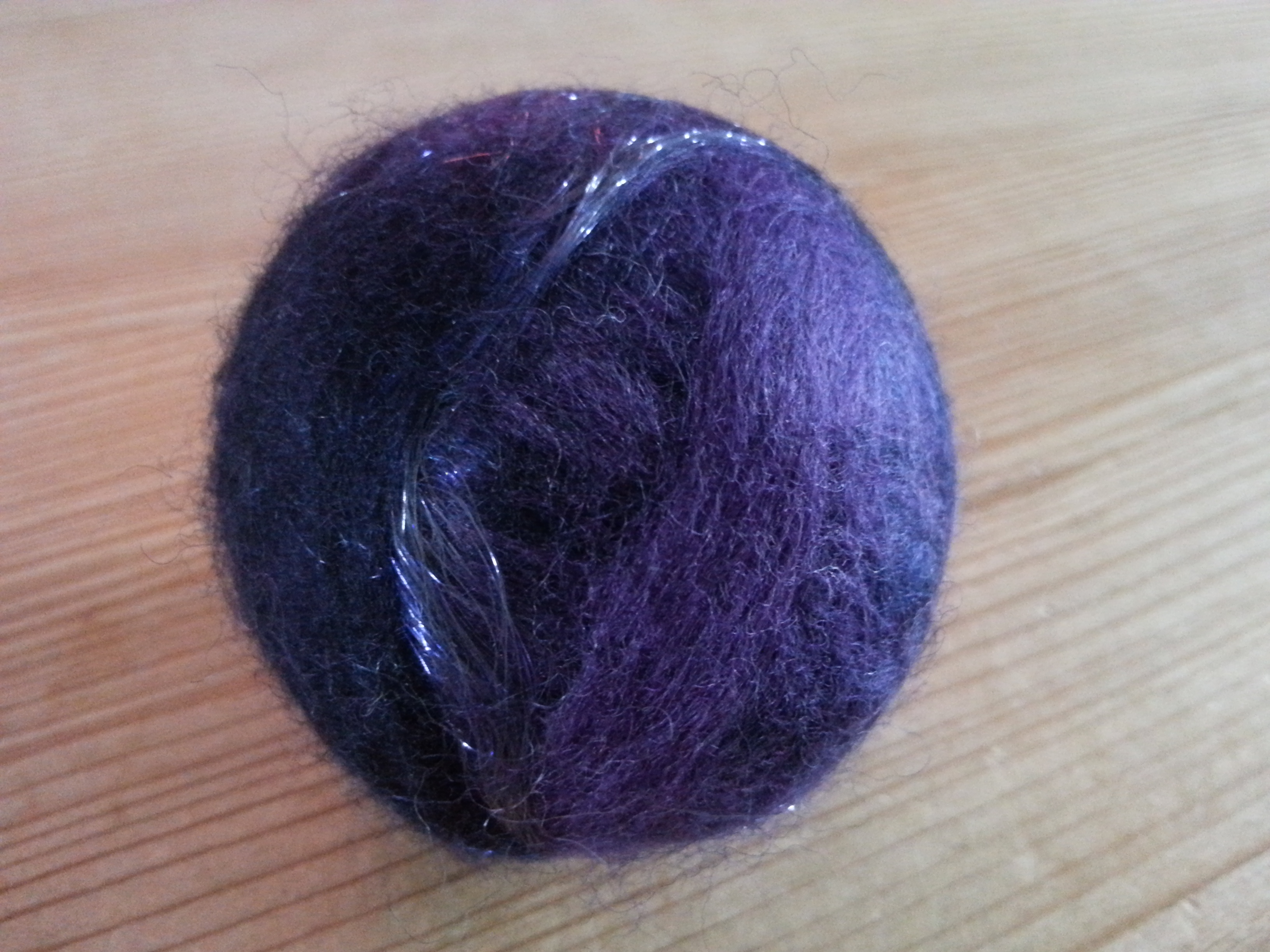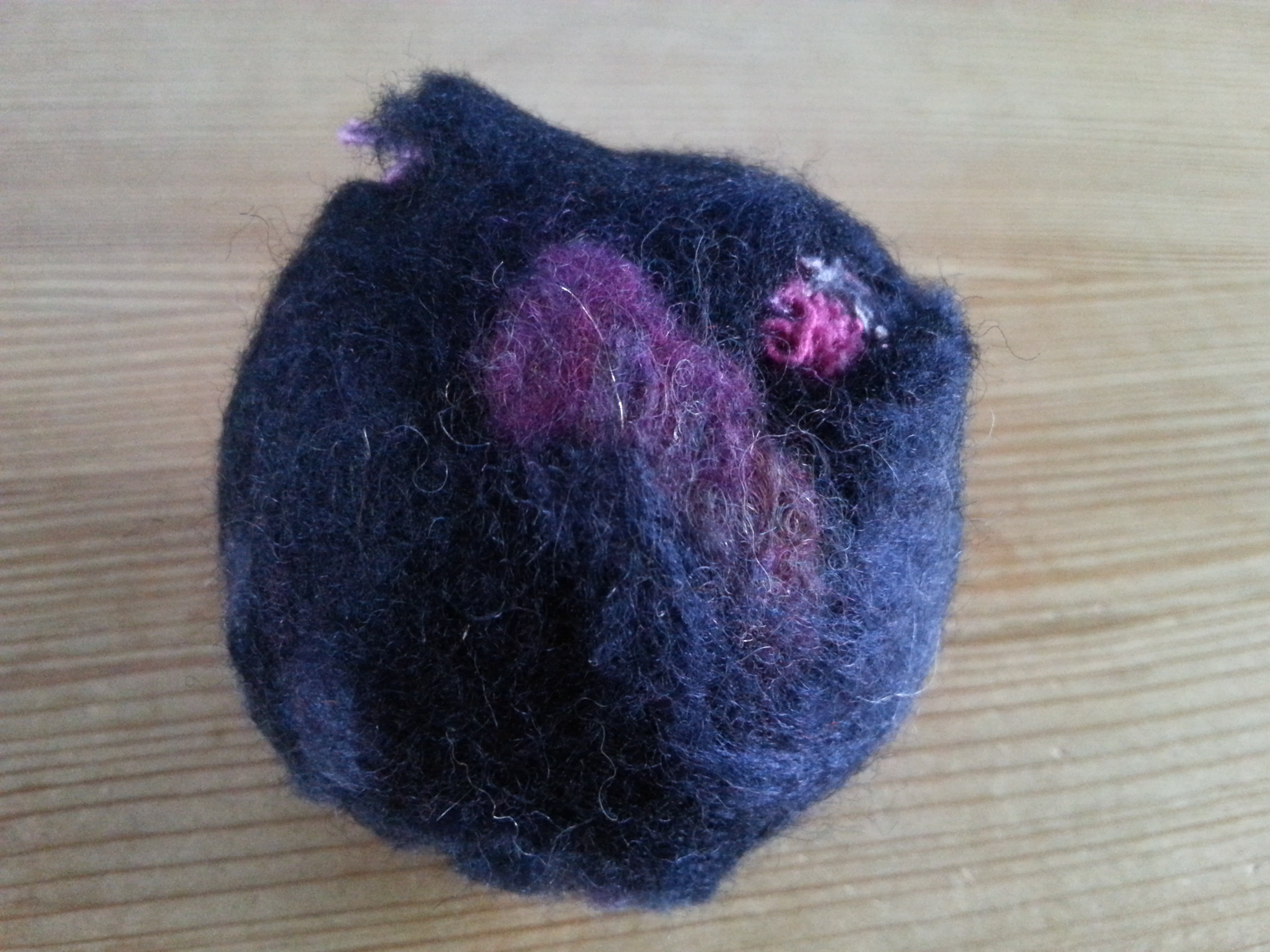Based on the tutor’s feedback, I revisited the felt ball samples with a view to extending these experiments further to produce a new set of final prototype/maquette samples.
I used the same basic principles but tried a number of experimental approaches to produce a range of more exciting and innovative textures and surfaces. I worked with a restrained colour palette to give the set a more cohesive feel. The colour palette and ball design was based on some of the inspiration material from the galaxy, space and planet work that has been an ongoing springboard for development from the earlier assignments and exercises.
Inspiration work
- MMT – A Final Piece – Felt Sample 1
- MMT Assignment 5 – Final piece – Research
- MMT Assignment 5 – Final piece – Research
- MMT Assignment 5 – Final piece – Research
- MMT Assignment 5 – Final piece – Research
- MMT Assignment 4 – Collatype – Exercise 3 – Collatype collage prints
- MMT Assignment 5 – Final piece – Research
- MMT Assignment 4 – Monoprinting
- Soft form relief paste on hand-dyed muslin
- Glue gun on paper – overpaint with koh-i-noor watercolour ink paints
- Spiral stamp onto relief paste – inktense sketch
The new samples were made using a range of techniques and in different sizes to experiment with scale, surface texture, composition and colour. I worked from small, 3cm needlefelted samples, up to a large 20cm piece wrapped and felted sample formed around a polystyrene core. The cores have different composition and with some samples, I cut into the ball to reveal the interior layers.
Needlefelting
This sample was small and soft to handle. The needle left tiny holes in the fabric.
Wetfelting
These samples are wetfelted pure wool with the inclusion of a small amount of angelina heat-bondable fibre. The wetfelt technique produces a much firmer ball with a smooth, dense surface. As the felt is built up in layers it was possible to create interesting colours, both on the surface and throughout the ball. The angelina was used sparingly to create the illusion of stars. In the ball (lower centre) I cut into the ball to reveal the inner layers and create textural interest on the surface. This ball reminds me, not only of planets with crater-covered surfaces but is also reminiscent of geodes which only reveal their inner beauty when cracked open.
Wetfelt with silk yarn core
For this sample I wanted to see the effect I could create by including a different core and surrounding it with wool felt. I took samples of hand-dyed bourette silk, rolled them loosely into a ball and embedded them by wrapping in layers of co-ordinating shades of wool felt. The ball was hardened off in the washing machine for a sturdy smooth surface.
Cutting into the surface revealed the knotty, stringy, heavily textured core which hadn’t felted as silk does not have scales that felt like wool. This gave the ball a very tactile surface, the smooth wool contrasting effectively with the knobbly silk.
Angelina on polystyrene core with felt outer
For this sample I stuck a polystyrene ball onto a skewer and used an iron to melt the heat-fusible angelina fibre.
The fused fibre proved to be rather stiff and had to be ironed again to form around the shape. I then laid layers of fibre around the angelina, working thinly so as not to obscure all the angelina. The ball was then secured in nylon tights and felted in the washing machine.
Roving wet-felted with yarn
For this sample I rolled a ball of roving, dipped in hot, soapy water and felted. The ball was then buillt up in layers. To keep the layers in place and add texture, I wrapped the ball with feltable pure wool. I continued to build the layers, wrapping at intervals with the yarn. When the ball reached the desired size I placed it in nylon stocking and felted it in the washing machine.
Hand-dyed raw fleece with polystyrene core, wrapped with yarn
For this final sample I wanted to create a more exciting surface texture. I felt that I had maintained a more restrained colour palette and created a much more successfully cohesive set of samples so far. I had also experimented with size and technique producing a more developed, varied series. However, I felt that the pieces in this final set had yet to match the much more interesting and tactile nature of the original ‘earth’ samples.
For this reason, for the final sample I hand-dyed a large bundle of raw mixed fleece. Drawing on my experience of handspinning and knitting I chose a range of breeds in the expectation that this would provide a variety of shades, handle, texture and felting properties.
As I wanted this to be a larger sample, I drew on the success of the earlier samples with the polystyrene core. This would save on materials whilst still producing a richly textured surface.
Using larger chunks of fleece and wrapping sparingly with the yarn I hoped that this would create a more variable, ‘planetary’, lava-like surface. To hold the finished form in place and to enhance the surface texture I put the ball in nylon tights and felted in the washing machine as this had worked well with the earlier samples.
Conclusions and final thoughts
This was a much more varied and experimental set of samples than my original selection for the final prototype/maquette. Whilst these samples are less resolved, they are more creative and exciting. Of the set, the final sample is my preferred piece as it is the most tactile, exciting and incorporates the best parts of the techniques I attempted.
